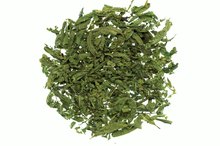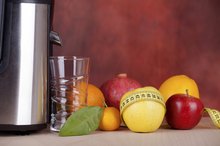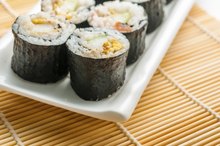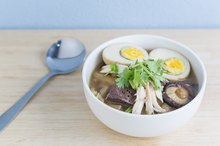What does fact checked mean?
At Healthfully, we strive to deliver objective content that is accurate and up-to-date. Our team periodically reviews articles in order to ensure content quality. The sources cited below consist of evidence from peer-reviewed journals, prominent medical organizations, academic associations, and government data.
The information contained on this site is for informational purposes only, and should not be used as a substitute for the advice of a professional health care provider. Please check with the appropriate physician regarding health questions and concerns. Although we strive to deliver accurate and up-to-date information, no guarantee to that effect is made.
Phase One of the Anti-Fungal Diet
Doug Kaufmann, author of "The Fungus Link," created the anti-fungal diet to minimize what he calls "fungal foods." These foods can throw off the delicate balance of good bacteria and promote the growth of bad bacteria and other pathogens, such as fungus, according to Kaufmann 14. His "fungal" theory is controversial and, as of 2014, there is no evidence to support the idea that diet leads to fungal overgrowth throughout the body.
The Anti-Fungal Theory
Kaufmann theorizes that a link exists between the epidemic of modern diseases, such as obesity and Type 2 diabetes, and a diet high in refined carbohydrates and processed foods. He postulates that a diet high in sugary foods promotes the growth of harmful bacteria and fungus. The solution, according to Kaufmann's theory, is to adopt a diet low in added sugar and processed foods, which won't promote fungal and bacterial overgrowth. The anti-fungal diet encompasses three phases, the first phase being the strictest. During the second phase, you reintroduce certain foods such as starchy vegetables and all fruit. During the lifetime, or third phase, you stick to a diet low in sugar.
- Kaufmann theorizes that a link exists between the epidemic of modern diseases, such as obesity and Type 2 diabetes, and a diet high in refined carbohydrates and processed foods.
- The solution, according to Kaufmann's theory, is to adopt a diet low in added sugar and processed foods, which won't promote fungal and bacterial overgrowth.
Foods to Include
What Is the Doug Kaufmann Phase One Diet?
Learn More
Phase one of the anti-fungal program is a diet overhaul, during which Kaufmann recommends sticking to fresh, whole foods as much as possible. Phase one includes eggs, fish, poultry, meat, non-starchy vegetables, most nuts and seeds, and healthy oils such as:
- flaxseed
- olive oil
- walnut oil
Kaufmann recommends choosing free-range meat and poultry and wild-caught fish.
Foods Excluded
Phase one of the anti-fungal diet excludes foods with added sugar, potatoes, yams, peas and legumes because they're starchy. It also excludes all grains, which includes wheat, rice, oats, quinoa, corn, buckwheat, barley, pasta and amaranth.include:
- It also excludes all grains
- which includes wheat
- rice
- oats
- quinoa
- corn
- buckwheat
- barley
- pasta
- amaranth
"Yeast" foods, such as bread, mushrooms and alcoholic beverages are also excluded. Phase one also excludes peanuts, because they're classified as legumes; pistachios, because they're commonly contaminated with fungus; pickles; hydrogenated or refined oils; soda; and coffee. Kaufmann recommends following phase one of the anti-fungal diet for 30 days, then reintroducing otherwise nutritious foods such as legumes and mushrooms in phase
- Phase one of the anti-fungal diet excludes foods with added sugar, potatoes, yams, peas and legumes because they're starchy.
- Phase one also excludes peanuts, because they're classified as legumes; pistachios, because they're commonly contaminated with fungus; pickles; hydrogenated or refined oils; soda; and coffee.
Sound Advice
The No-amylose Diet
Learn More
The recommendation to increase your fruit and vegetable consumption and cut back on processed foods and added sugar is echoed by mainstream nutrition experts. The average American consumes 23 teaspoons of added sugar, according to the Center for Science in the Public Interest 2. That amount is significantly higher than the 6- and 9-teaspoon limits recommended by the American Heart Association for men and women, respectively 3.
Related Articles
References
- The Fungus Link: An Introduction to Fungal Disease, Including the Initial Phase Diet; Doug Kaufmann
- Center for Science in the Public Interest: Sugar Too Much of a Sweet Thing
- American Heart Association: Sugar 101
- The Fungus Link to Health Problems; Doug Kaufmann
Writer Bio
Barbara Froek is a dietitian and fitness trainer who holds a Bachelor of exercise and nutrition sciences as well as a Master of dietetics, food and nutrition. She has served as a contributing writer for various diet and fitness magazines including "Flex," "Muscular Development" and "Muscle & Fitness Hers."









